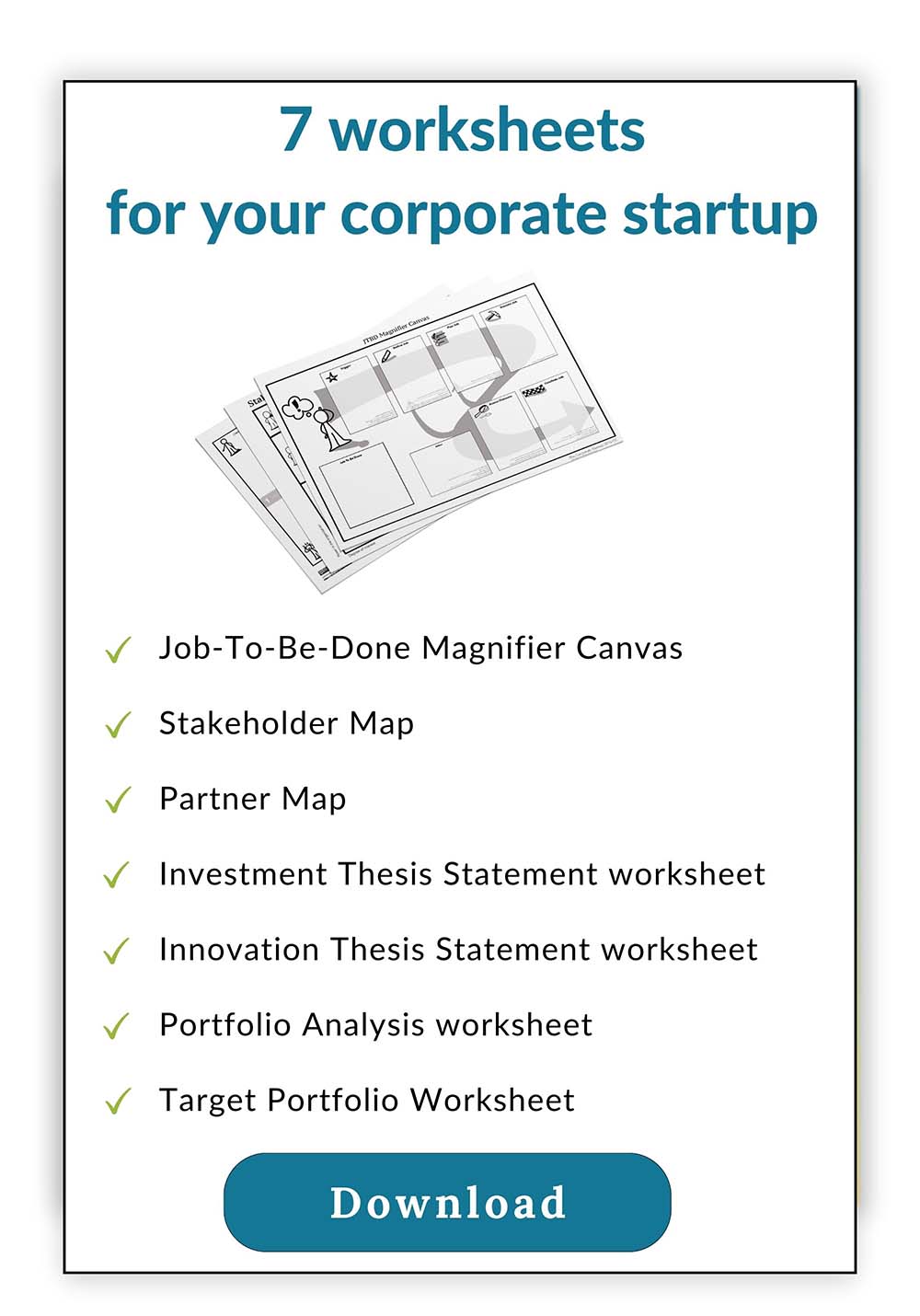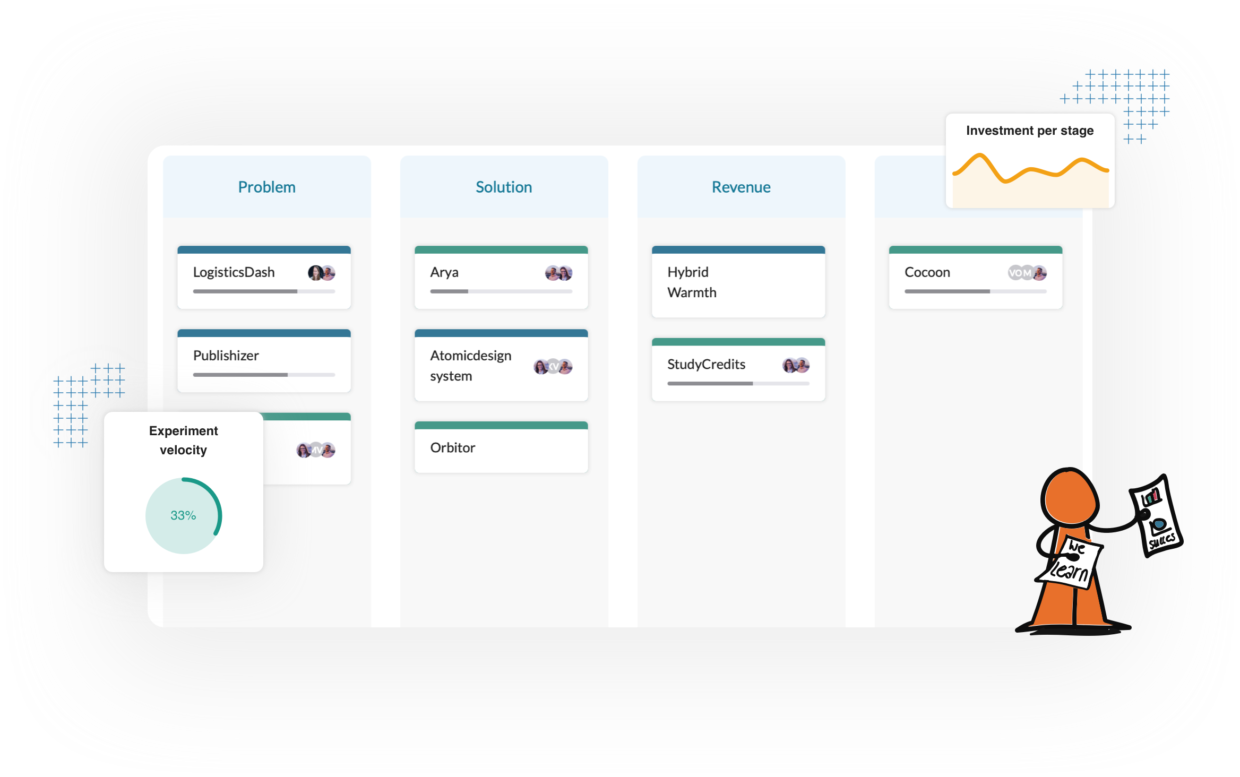Using the Startup Studio model to structure Corporate Innovation Labs
The topic of how to structure the perfect corporate innovation lab comes up regularly when talking to innovation managers.
Some corporates have one big central lab where all innovation happens. It’s a separate department or business unit with its own resources and budget. The down-side of this is that innovation happens far away from the day-to-day business. It is sometimes perceived as the playground where the cool guys go to have fun. But when a team is disbanded, it is often hard to get the team members back into the “normal” business. They moved out of their business unit and are now working at a different department and often have to re-apply for their old jobs.
Other corporates have an innovation lab per business unit. That brings innovation closer to the business, but it also makes it harder to get enough resources out of the business units into the lab. Sharing learnings is also much harder if your labs are distributed among the company.
In the last couple of weeks, I have been thinking a lot about the startup studio model and how to apply that to corporate innovation.

[convertkit form=5141483]
What is a Startup Studio?
A startup studio, also known as a startup factory, or a venture builder, is a studio-like company that aims at building several companies in succession. (Source: Wikipedia) Just like a movie studio that creates multiple movies in succession, using shared resources and learnings to be successful. One of the best-known startup studios is Betaworks from New York, responsible for building companies like Bitly, Giphy, Dots, and Chartbeat. The studio takes internal or external founders and together with a team of shared experienced startup employees bring new ideas to life.
How to apply the Startup Studio model to Corporates
The great thing about the studio model is that you can have idea owners from the business that have an intrinsic motivation to bring their idea to success, combined with a corporate startup team that becomes more experienced with every initiative they help bring to scale. When a corporate startup fails, or as we prefer to call it: gets invalidated, the idea owner can return to the business bringing with him valuable knowledge about corporate innovation to apply to the core business. The studio team can move on to the next corporate startup and help a new idea owner with a new corporate startup. That way, you get studio teams that become more and more experienced combined with fresh minds with intrinsic motivation.
I also like this setup because you can apply different types of innovation accounting. A regularly used metric for a startup studio is the number of startups founded in a year. When a studio startup has a meeting with their investment board, the board can then question whether they want to continue with an idea and invest more money and time or free up the team and resources to try out a new idea. Because at the end of the year, the “startups founded”-metric needs to be met with a fixed amount of resources. Of course, there could be the luxury problem of too few but really successful startups, but we have never encountered this. Labs that do not try out enough ideas, however, are much more common.
[convertkit form=2570335]
At GroundControl we see that HR capabilities for innovation are in high demand but often in low supply. The great thing about the studio model is that the idea owners can help spread these innovation capabilities throughout the entire company. Simultaneously, the innovation lab is creating expert startup teams that learn by doing and act as coaches to expand the HR capabilities even more. This will slowly transform the company into a corporate innovation powerhouse.
If you’d like to learn more about the startup studio model and how to apply that to your innovation lab, we’d be happy to have a chat.

Timan Rebel has over 20 years of experience as a startup founder and helps both independent and corporate startups find product/market fit. He has coached over 250+ startups in the past 12 years and is an expert in Lean Innovation and experiment design.
